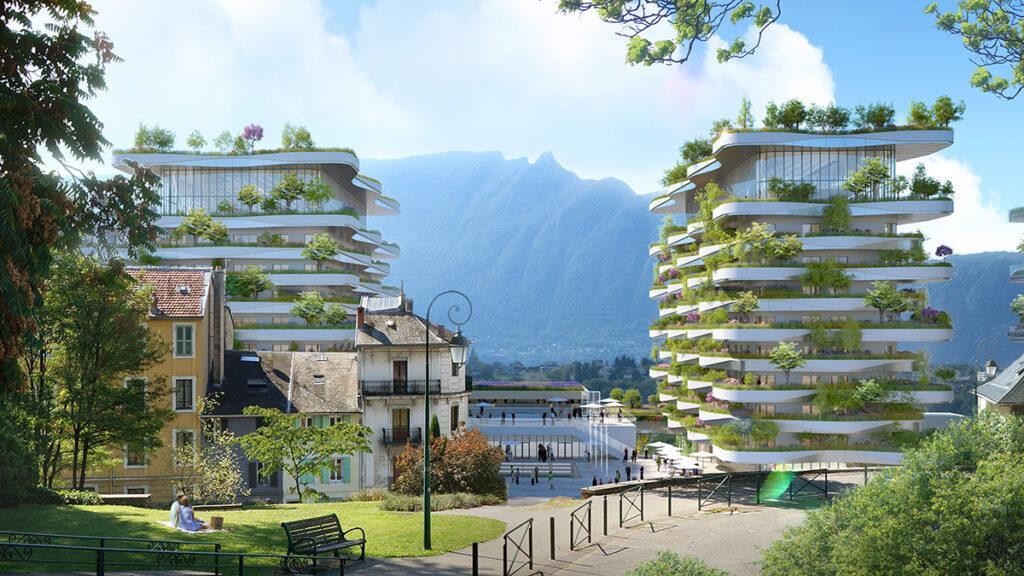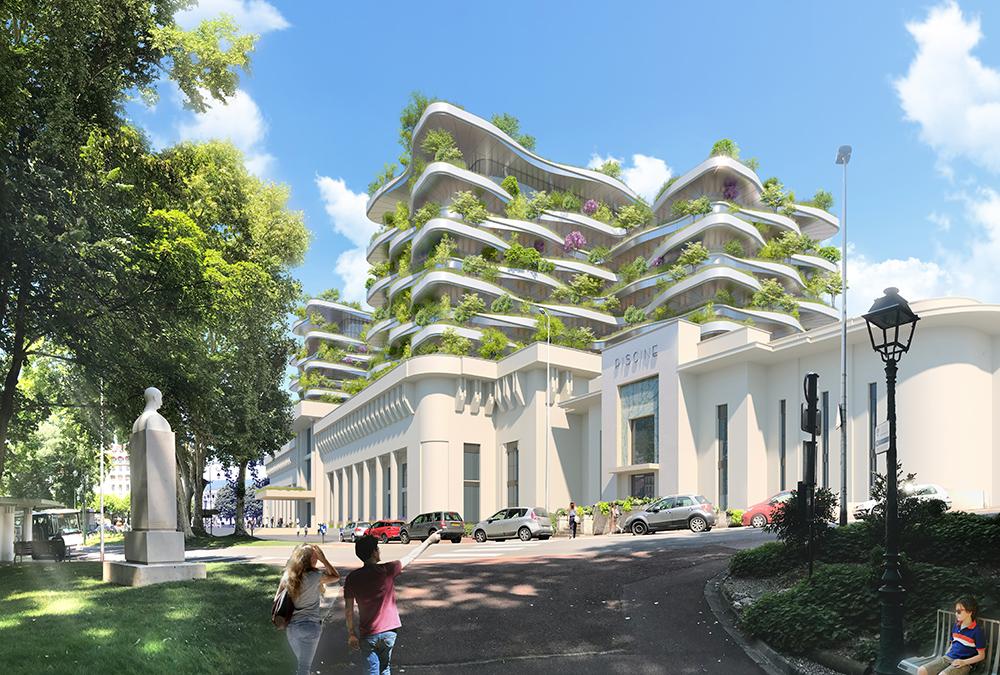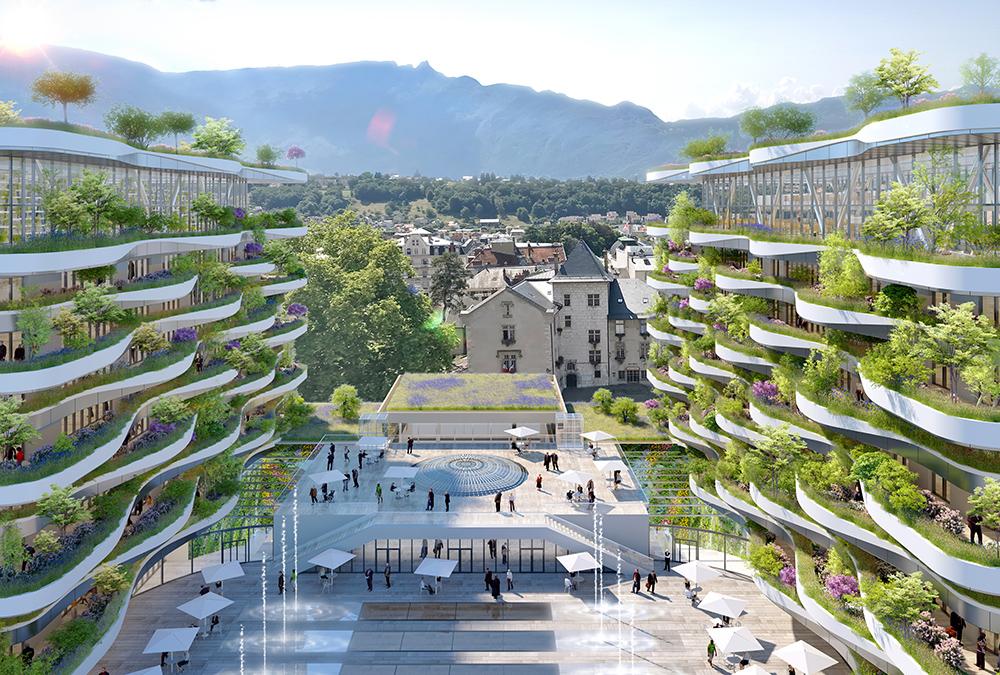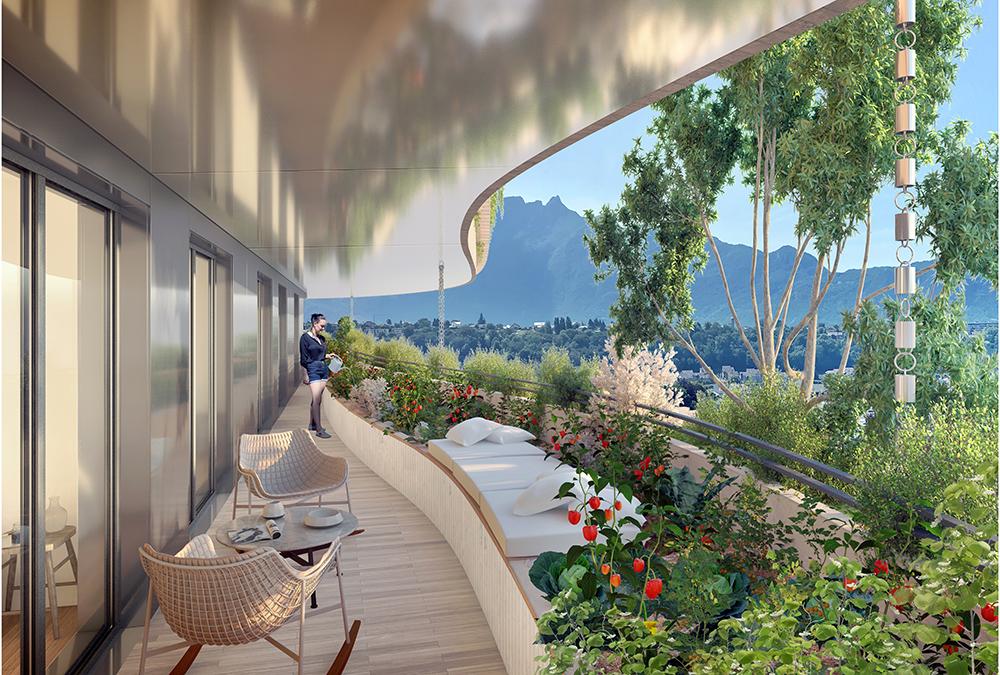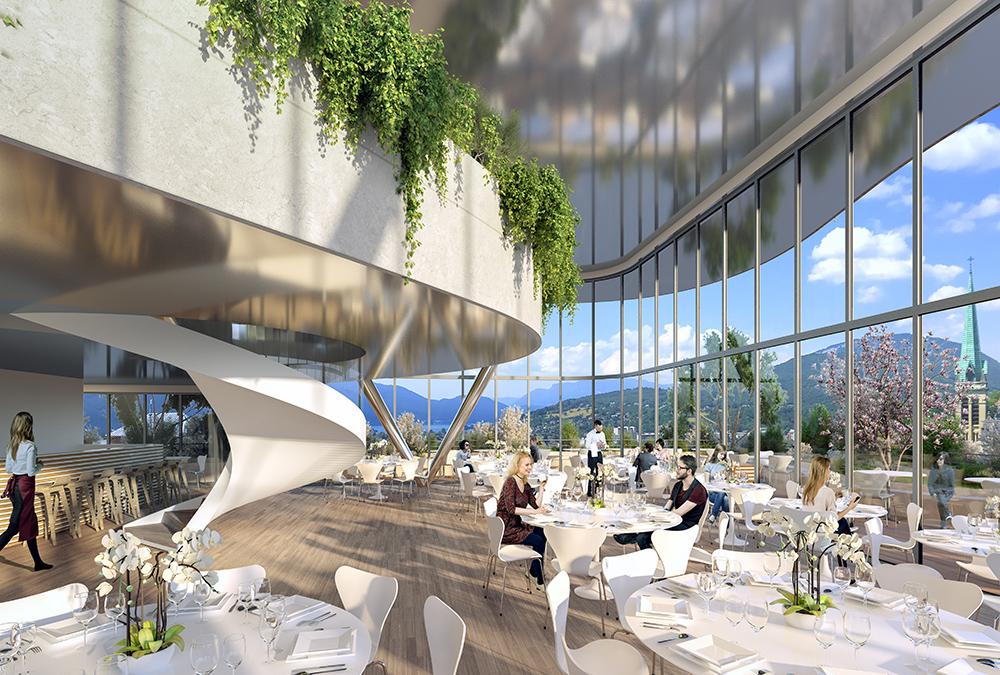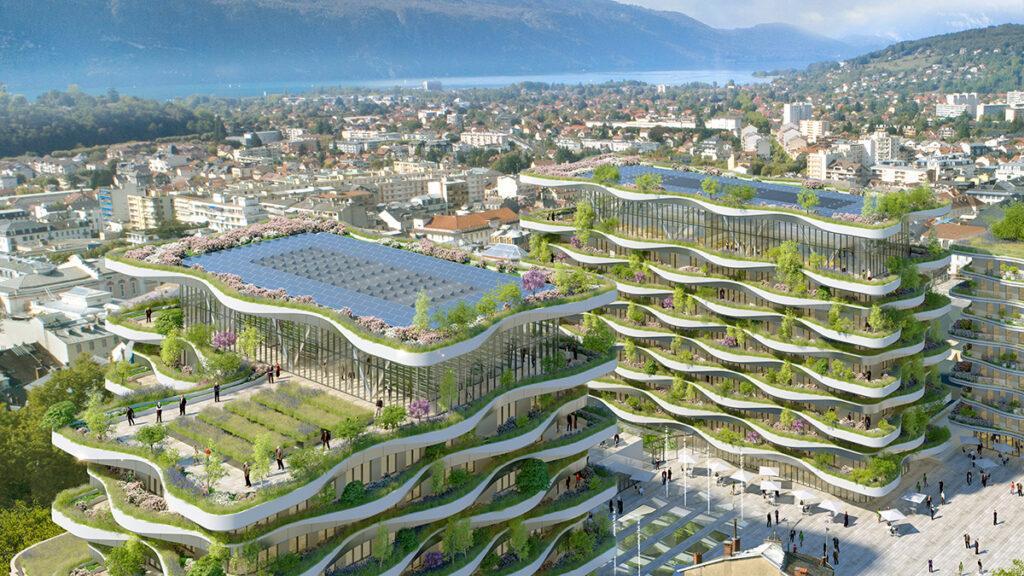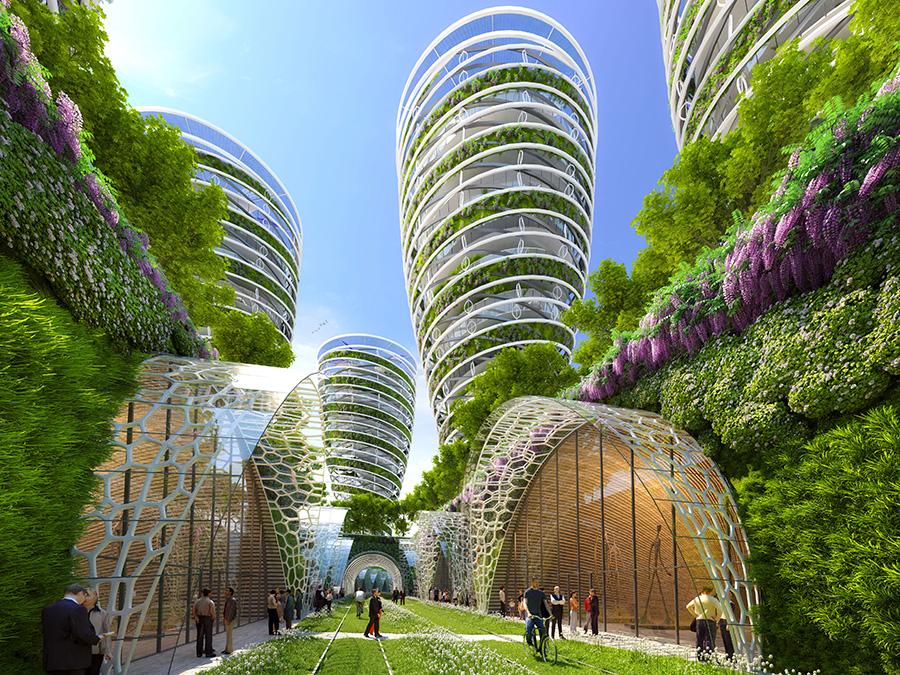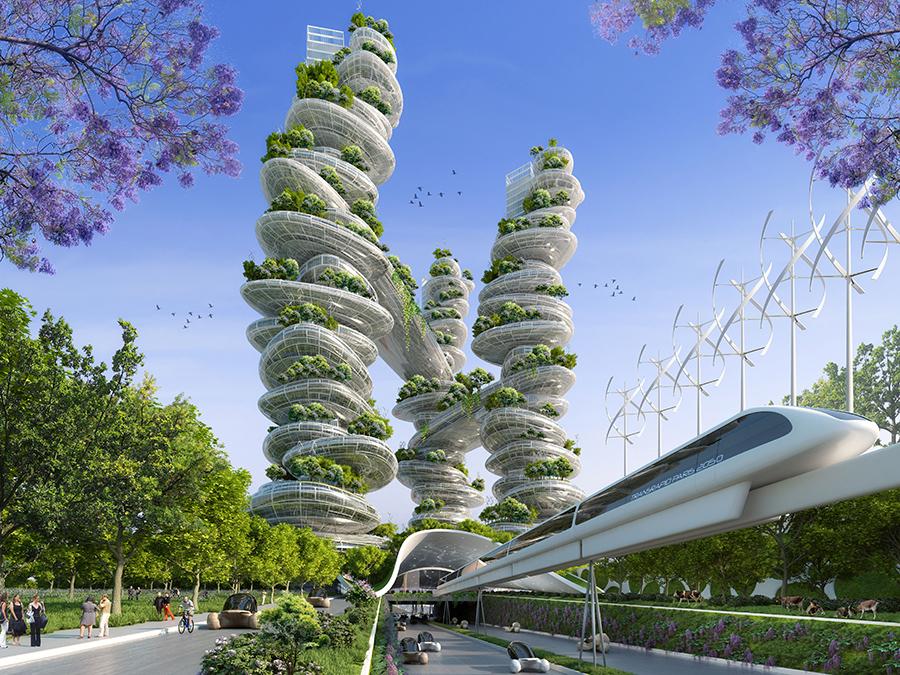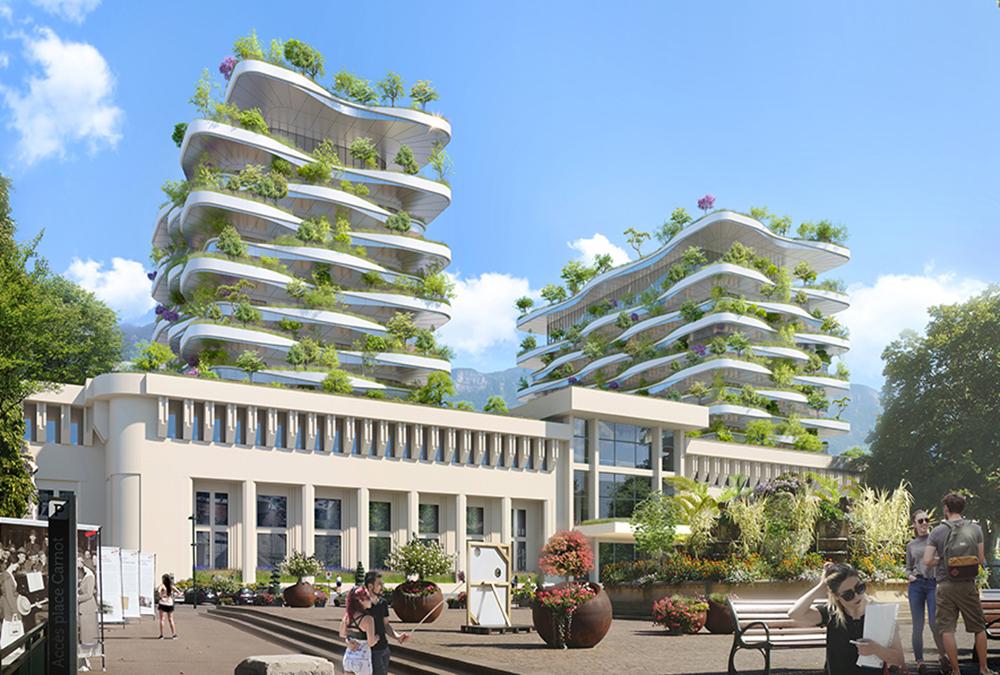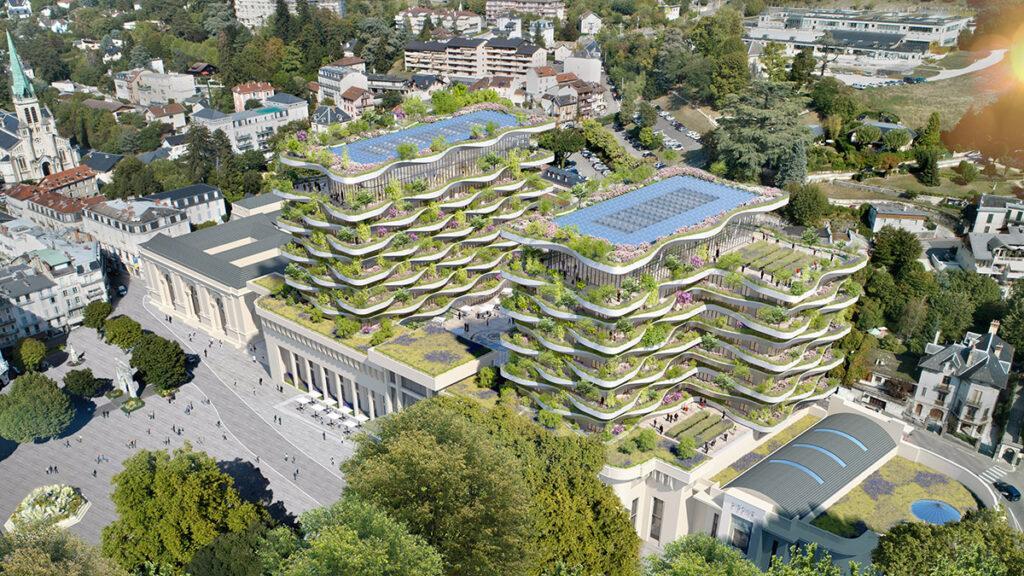Aix-les-Bains: antiquity in green
The ancient Romans used to bathe in healing waters here, and aristocrats from all over the world came to socialize during the Belle Époque. The historic baths in France’s thermal spa resort Aix-les-Bains are now on course for new fame: eco-architect Vincent Callebaut is turning them into a green paradise.
Picturesque Aix-les-Bains has a rich history to its name. Even back in the Neolithic period, people settled near its warm springs, which are located in what is now the French department of Savoie. In the first century BC, the Romans discovered the healing springs and laid the foundation for the town as we know it today. These thermal baths on the Eastern shores of Lac du Bourget remained popular over the centuries. Famed as a spa for the international noblesse, notably during the Belle Époque, Aix-les-Bains will soon have a whole new image as a future-friendly green paradise devised by eco-architect Vincent Callebaut.
Enthusiastic local support
Local people were found to be very much in favour of Callebaut’s sustainable concept, and this set the wheels in motion for the project named “Foam of Waves”. The architect, town and state authorities have been working on its implementation since 2019. As with all projects of this magnitude, there are likely to be further developments before building work begins. Nevertheless, the design for Aix-les-Bains by famous visionary Callebaut involves a glorious renaissance of the historic baths.
“Metamorphosing is turning the caterpillar into a butterfly”, according to the project description. Vincent Callebaut Architectures aims to “integrate the best of every era into our future”. But preservation and renovation alone are not enough: “As architects of the metamorphosis, we are – above all – surgeons who repair the wounds and heterogeneous growths”, the description continues.
Green transformation
Historic parts of buildings and functional 20th-century additions were evaluated carefully beforehand. The aim is to return the gardens to full bloom, to create jobs and to unveil and enhance cultural heritage through contemporary architecture. Then, Callebaut feels, we will be “acting as futurists”. After all, the Ancient National Baths are to be a flagship project that meets all future requirements. Their usability, sustainability, technology and social progress will be fit for the years to come.
Climate-neutral and fit for the future
“Architecture is now able to implement the concept of solidarity between an existing heritage and a contemporary positive energy project. The latter provides the energy needed for the former by integrating bioclimatism and renewable energies,” concludes Callebaut. The new baths at Aix-les-Bains are to be climate-neutral – with zero net emissions in accordance with the 2015 United Nations Climate Change Conference.
It will certainly be no mean feat to renovate this erstwhile popular venue for the rich and famous. For one, it will involve clearing the thermal bath extensions built by architect Claude Mabileau circa 1970 and ridding the patios of additional structures. Not to mention laying bare the historic roofs and elaborate facades of the 19th-century Pellegrini and Revel buildings. Anything not deemed worth conserving or at odds with the new look will be removed. Yet the concept shines a new light on fascinating relics, such as artefacts from Roman times. In short, there is a lot of work to be done in Aix-les-Bains.
Ample room for self-providers
Callebaut’s design also aims to promote urban agriculture. In response to the accelerating need for food in increasingly dense cities, the people of Aix-les-Bains will soon have the chance to grow their own. Here, the eco-architect quotes the Food and Agriculture Organization of the United Nations: “Garden plots can be up to 15 times more productive than rural holdings. An area of just one square metre can provide 20 kg of food a year.”
In Callebaut’s view, the growing urban yearning for nature will also benefit environmental protection efforts in Aix-les-Bains. After all, responsibly nurtured private gardens can help to optimize the carbon footprint.
After the “metamorphosis”, the thermal baths of Aix-les-Bains are expected to be buzzing with life, courtesy of innovative residential areas, co-working spaces and a restaurant with a panoramic terrace. Another part of the plan involves suspended gardens and an organic shopping gallery. Callebaut also wants to create a place where, rather than being anonymous, tourism is environmentally friendly, personal and connective.
A new take on tourism
The new centre aims to enable tourists to enjoy the conviviality and hospitality of the local people. These plans are influencing the structure of the new thermal facilities. For instance, they include a tourist office in the Pellegrini building and an architecture and cultural heritage centre in the Revel building. A wellness centre and several parking garages are also on the agenda. All, needless to say, in keeping with ecological paradigms – as befits Vincent Callebaut, who is regarded as the pioneer of sustainable strategies.
Apartments and sky gardens
“Foam of Waves” will result in many improvements for the people of Aix-les-Bains, such as 185 “green” apartments. A total of 13,500 m² of the new buildings are earmarked for these. 75 percent are to be sold, with 25 percent reserved for social housing. According to plans, they will all be surrounded by “sky gardens” where residents are free to grow their own food.
The panorama restaurant will boast a splendid view of the lake and mountains, and an educational farm dedicated to permaculture and aquaponics will be located on the roof of the south building. With glass floors over the Roman remains, the new Place Georges 1er will be a place for people to meet, while its large dome optimizes the connection with the town and the Old Baths.
Paying tribute to history
The “windows” above the Roman relics are framed by water features as a respectful nod to the historic healing waters of Aix-les-Bains. At night, Place Georges 1er is to be lit up elegantly from the archaeological sites.
Smart and “green” shopping
Vincent Callebaut also has a few excellent ideas up his sleeve for the “commercial gallery” in the Pétriaux building. The two historic patios will be converted into vertical gardens that are flooded with natural light. These will be revitalized by the escalators connecting the new, high Place Georges 1er with the lower Place Maurice Mollard. The glass domes overlooking the two other secondary patios will remain in place. The patios will be spanned by the new buildings and enlarged through vertical gardens.
Callebaut’s concept affords the thermal baths a far greater role than just serving as a passageway connecting the upper and lower town. They will be – as once before – a destination associated with entertainment, wellness and relaxation. At the same time, the new shopping centre is expected to give visitors an appetite for eco-gastronomy, organic cosmetics and sustainable regional products.
Compact elegance for Aix-les-Bains
Green towers, as developed by Callebaut for Paris 2050, are not part of the plan for Aix-les-Bains. The highest residential floor will only be 28 metres higher than the new elevated Place Georges 1er.
The project name – Foam of Waves – is taken from a line in a poem by Alphonse de Lamartine. It refers to the lake where the town is situated and which also serves as inspiration for the flowing forms of the new buildings.
Two gracefully curved silhouettes will form the main facade. Their lines define the latitude of the architect in respectfully restoring this cultural heritage. Callebaut is using as much ground area as possible to keep the buildings low and discreet. This plan also ensures that every room will have plenty of natural light.
Edible diversity
The staggered waves of the facades are designed so that large trees can grow on two floors. The project also includes a diversity of colours and fragrances. Professional gardeners will plant seasonal blooms on the walls of the building, whereas the green areas behind can be used by residents to grow whatever they choose.
Modern PlusEnergy complex
The project’s two narrowest fronts face Place Maurice Mollard, the L-shape running along Rue Georges 1er. The rounded corners of the building reflect the Art Deco vocabulary of the Pétriaux facade.
From a technological and environmental perspective, however, the plans for the Aix-les-Bains thermal centre are anything but nostalgic. After all, Callebaut aims to create a PlusEnergy complex that is every bit as impressive as similar new buildings in other towns and cities. The project must produce more energy than it uses.
Wide range of measures
To achieve this, key parameters have been integrated in the design. Densely arranged endemic plants will prevent heat islands, while rainwater will be used and grey water recycled. Every year, vertical forests are expected to absorb up to 150 tonnes of CO2 and produce oxygen. Bio-based or recyclable material will be employed for optimum heat and sound insulation. The bioclimatic buildings are equipped with passive technologies, for example with a geothermal system that benefits from the hot thermal springs and with windcatchers for natural ventilation.
The roofs are also to be equipped with photovoltaic and thermal unit, with a small biomass power plant planned for recycling organic waste. Callebaut’s team is also looking into the option of cogeneration with rapeseed oil. And smart building technology will monitor the system’s energy consumption. Planners are aiming to achieve a healthy mix of high- and low-tech elements.
Material decision
Callebaut’s climate-neutral architectural design is based on a circular economy. However, the choice of construction material has yet to be made. The planning team is examining two possible variants for the structure of the new buildings: high-performance concrete and cross-laminated timber.
Concrete versus wood
The basic option with high-performance concrete would permit optimal sizing and rational usage of natural resources. As the architect explains, this would also allow longer spans with prestressed hollow brick ceilings, which in turn would make it easier to redesign the interiors in future. Other benefits that Callebaut associates with high-performance concrete include durability, energy efficiency (thermal inertia) and the absence of VOC emissions.
If solid wood is to be used, the project will be expected to meet the requirements of the FSC (Forest Stewardship Council) or PEFC (European Forests Certified) certificate. In any case, an extensive environmental assessment of the entire life cycle will be conducted over several stages.
Wellness among the crops
Native fruit trees will be planted on the main roof of the thermal baths to attract small fauna to the urban surroundings. With an enviable view of Galerie Pétriaux, this orchard is ideally suited as a public park. The wave-shaped balconies will also bear regional “fruit” in the form of berries, vegetables and herbs. In addition, greenhouses on the roofs will serve as a resource centre for employees. This is to encourage them to take an interest in urban agriculture.
Aix-les-Bains sets a green example
“Foam of Waves” is expected to breathe vigorous new life into the spa town, which is admittedly past its prime. Modern, sustainable architecture will underline Aix-les-Bains’ illustrious history as a place of relaxation. Its centre will offer many highlights in addition to the baths themselves. Callebaut’s project has everything that is needed to make Aix-les-Bains a model of ecological, forward-looking architecture.
Waiting to take the stage again
It will admittedly take some time for the green paradise to be completed. Not that it really matters – the healing waters at Lac du Bourget have been around for centuries. And a few years’ wait is a small price to pay for a new era of international fame.
Text: Elisabeth Schneyder
Translation: Rosemary Bridger-Lippe
Images: Vincent Callebaut Architectures
